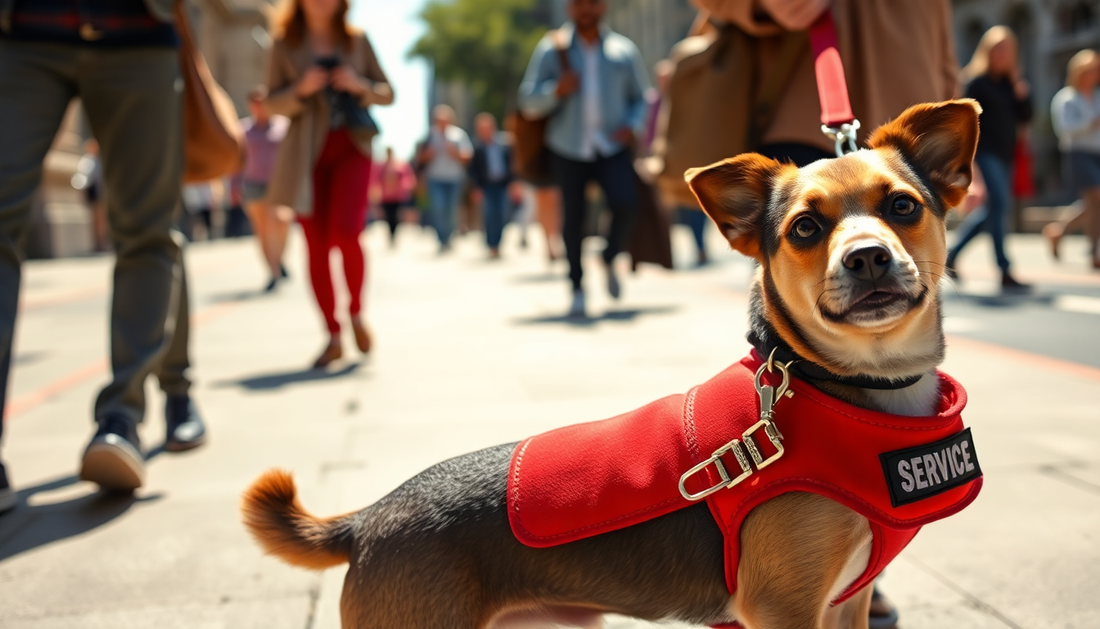
Training Your Service Animal
Share
As pet owners, we understand the deep bond we share with our furry companions. But for some individuals, a pet is more than just a friend - it's a vital lifeline. Service animals play a crucial role in empowering people with disabilities, providing invaluable assistance and companionship.
Understanding Service Animals and Emotional Support Animals
Service animals are highly trained to perform specific tasks that mitigate the effects of a person's disability. These tasks can range from guiding the blind, alerting the deaf, or providing mobility assistance. In contrast, emotional support animals (ESAs) provide comfort and companionship to individuals with mental or emotional disabilities, but they are not trained for specific tasks.
Proper training is essential for service animals to effectively assist their handlers and navigate public spaces. This training not only ensures the safety and well-being of the handler but also promotes public acceptance and understanding of the vital role these animals play.
Selecting the Right Service Animal
Choosing the right service animal is a crucial first step in the training process. Factors such as breed, temperament, and health requirements must be carefully considered. For example, guide dogs are often Labrador or Golden Retrievers, known for their calm demeanor and intelligence. Mobility assistance dogs, on the other hand, may be larger breeds like German Shepherds or Retrievers, with the strength and stability to support their handlers.
It's important to assess the animal's temperament and ensure they are well-suited to the specific tasks required. A thorough evaluation by a professional trainer can help identify the right match and set the foundation for successful training.
Mastering the Basics: Obedience and Socialization
The foundation of service animal training lies in obedience and socialization. These essential skills ensure the animal is well-behaved, responsive to commands, and comfortable in a variety of public settings. Obedience training covers basic commands like sit, stay, and heel, while socialization exposes the animal to different sights, sounds, and experiences, helping them remain calm and focused in diverse environments.
Consistent practice and positive reinforcement are key to building a strong bond between the handler and the service animal. This partnership is crucial, as the animal must be able to anticipate and respond to the handler's needs seamlessly.
Specialized Training for Service Tasks
Beyond basic obedience, service animals undergo specialized training to perform tasks that mitigate their handler's disability. Guide dogs, for example, learn to navigate obstacles, find doors and elevators, and safely guide their handler through busy streets. Hearing dogs are trained to alert their handlers to important sounds, such as alarms, doorbells, or the voices of loved ones.
Psychiatric service dogs, on the other hand, may be trained to perform tasks like retrieving medication, providing deep pressure therapy, or interrupting harmful behaviors. The specific training required will depend on the handler's unique needs and the service animal's capabilities.
Navigating the Legal Landscape
The Americans with Disabilities Act (ADA) provides clear guidelines on the rights and responsibilities of service animal handlers. Under the ADA, service animals are allowed to accompany their handlers in all public spaces, including restaurants, stores, and public transportation. However, it's important to note that emotional support animals are not considered service animals under the ADA and may not have the same public access rights.
Certification and registration for service animals are not required by federal law, but some states or local jurisdictions may have their own regulations. It's crucial to research the laws and regulations in your area to ensure you and your service animal are in compliance.
Overcoming Challenges and Finding Support
Training a service animal is a rewarding but often challenging journey. Common obstacles may include behavioral issues, public misunderstandings, or the physical and emotional demands of the training process. Seeking the guidance of professional trainers and connecting with support groups can be invaluable in navigating these challenges.
Remember, patience and dedication are key. With the right training and resources, you and your service animal can forge an unbreakable bond and unlock a world of possibilities.
Resources for Service Animal Training
At Spot Pet Supply, we're committed to supporting the service animal community. In addition to our wide selection of pet care products, we've curated a list of trusted resources to help you on your training journey:
- Professional service animal trainers and organizations
- Online training courses and tutorials
- Support groups and advocacy organizations
- Informative articles and guides on service animal laws and best practices
Whether you're just starting the process or looking to refine your service animal's skills, we're here to provide the guidance and resources you need to succeed.
Conclusion
Unleashing the power of a service animal is a transformative experience, empowering individuals with disabilities to live more independent and fulfilling lives. By mastering the art of service animal training, you're not only enhancing your own well-being but also contributing to a more inclusive and understanding society.
